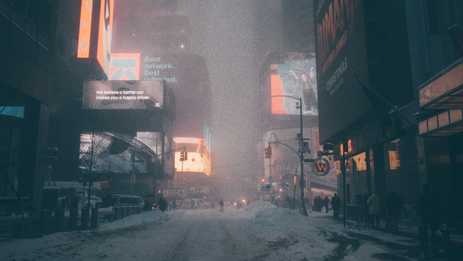Cyberpunk is a genre that has been pithily characterised as ‘high tech, low life’.
Sure, it’s all about hackers and far-out tech, but another appeal of cyberpunk lies in its similarities to hardboiled crime fiction.
Here’s what to consider if you’re thinking of writing cyberpunk.
The heart of cyberpunk
At the heart of cyberpunk fiction lies the character of the cyberpunk, a young, subversive more-than-averagely-digitally-literate individual. Whatever the norm in your story world, your cyberpunk protagonist certainly deviates from it.
The first official cyberpunks were teenage characters in Bruce Bethke’s eponymous 1980 short story. They belong to their own cyberpunk subculture, disdainful of ‘Olders’ and living for the twin excitements of code and new technology.
In one of my previous posts on world-building, I introduced author Orson Scott Card’s MICE acronym, which you can use to decide whether your story is primarily Milieu, Ideas, Character or Event-oriented. Well, pretty much all of the cyberpunk stories I’ve ever read have been character-oriented.
As well as being driven by character, cyberpunk stories remind me a lot of crime fiction. This is the case on every level from language, which is often distinctly hardboiled, to plot, which usually features criminal or antisocial activity.
Crimes and misdemeanours
Cyberpunks have a history of run-ins with authority or the law, which doesn’t deter them from plotting even bigger crimes. Sometimes this is for money, as with the early misdemeanours of Case, star of William Gibson’s landmark 1984 novel Neuromancer.
From time to time, the crimes are semi-accidental, because the – usually teenage – characters are young and easily led, or suffer bad luck. That’s certainly the case in Bethke’s Cyberpunks.
Occasionally it’s because the rules don’t serve true justice. Tendeka, a character in Lauren Beukes’ 2008 novel Moxyland, resorts to underground activity in his attempts to undermine totalitarianism.
Another character who behaves in this way can be found in the world of ScandiCrime. Even though she’s far from her natural genre home, Lisbeth Salander, heroine of Stieg Larsson’s Millennium trilogy, is a cyberpunk through and through.
A whiff of dystopia
Read a bit of it and you’re bound to notice that a frequent cyberpunk theme is the struggle against a society with a rotten heart. As a genre, cyberpunk shares the themes explored in dystopian literature.
- Chiba City, the setting for Neuromancer, is a chaotic sprawl where drug lords and mercenaries ply their trade unmolested by the law.
- The South Africa portrayed in Moxyland is a country where a young woman can be ‘sponsored’ by a corporation, and injected with nanobots which make her dependent on a particular brand of soft drink. Not only that, she’s irreversibly branded with the company logo.
- Cory Doctorow’s intriguing YA novel Pirate Cinema takes place in a Britain stifled by repressive copyright laws. Interestingly, Doctorow puts his money where his mouth is by making the book available for free online.
No doubt about it, folks – when you read or write cyberpunk, you’re in dystopian territory.
Other ingredients in the cyberpunk mix
Of course, there’s more to cyberpunk than deviant characters and crime-riddled, broadly dystopian plots. Here’s a quick rundown.
- Confusion – Make no mistake about it, you’re not on the inside. These cyberpunks want you to know that. It’s why you won’t be spoon-fed explanations in a cyberpunk story. As a reader, you have to work it out for yourself by decoding allusions and making inferences. As a writer, that’s kind of liberating, isn’t it?
- Technology – Ah yes, the technology. Cyberpunks live for it, the authorities try to control it. Cyberpunk stories usually revolve around getting access to some kind of data network or virtual reality system, which is how key events, be they good or bad, happen. In Neuromancer there’s The Matrix (some fifteen years before the Wachowski’s film of the same name). In Moxyland, everyone who wants legitimacy needs to be part of the dominant digital network via their phone’s SIM card. But events also pivot around an online gaming environment, reminiscent of Second Life.
- Class divide – Societies in cyberpunk literature are invariably segregated into haves and have-nots, and the gap between them is wide. That’s where the characters’ motivation comes from; they’re fighting to survive, and to move another rung up the ladder. But (of course!) the odds of success are slim.
- Historical setting – Although the technology in cyberpunk fiction is often ridiculously advanced, the historical setting is normally near (as opposed to distant) future.
Get ready to write cyberpunk
Fancy trying your hand at cyberpunk? Start your research by reading hardboiled crime fiction by the likes of Elmore Leonard and Jo Nesbo (whose non-Harry Hole books are a masterclass in fast-paced plotting).
Then take out a subscription to Wired magazine. Because reality is often the best possible fuel for the imagination, especially where technology is concerned.





